In the interest of journalistic integrity, I have to disclose that the subject of this interview and I have a history. It started circa 1998, when me and a teenaged Jessica Peterson attended a Mighty, Mighty Bosstones concert together on a Connecticut college campus near our hometown. We both thought we were pretty big shots in those days, and while I’m sure riding in my parents’ car after being picked up from the show remains one of her defining life moments, Peterson is doing far more noteworthy things these days as the CEO, Creative Producer, and Founder of Mighty Oak.
The full-service studio, based in Brooklyn, focuses on animated storytelling, and has been gaining momentum since its inception in 2015. Since then, the growing group of creatives who make up the Mighty Oak team has strategized visual solutions for some major clients, including Netflix, HBO, NBC, Airbnb, Condé Nast, and The New York Times, with their work receiving over 300 million views across platforms.
Along the way, food brands have also discovered a special opportunity in the way Mighty Oak can bring their products to life. Recently, I had a chance to reconnect with Peterson and Michaela Olsen, Partner and Creative Director, to discuss the two industries. As disparate as food and animation may seem, they’re connected through Mighty Oak’s objective, to preserve the tradition of hand-crafted art in the digital age—a mission which parallels that of many modern culinary businesses.
What is Mighty Oak, and what do you do there?
Jessica Peterson: Mighty Oak is a creative studio that specializes in handmade animation. Our mission is to bring the human touch back into the picture for media brands, and we do that using handcrafted techniques with new technology.
When you were getting started, the idea was to launch a female-centric marketing agency, right?
JP: Right! [The idea was] branding for women building businesses. I felt like I understood that community. I had a lot of friends who were artists, but they didn’t know how to sell. My goal was to help these people build their businesses and brands.
But I didn’t know how to run my own business, so I entered a competition at the Brooklyn Public Library to make a business plan. I got to the financial part and started laying out my projections, and realized it was not a viable model to serve the people I wanted to, who statistically were not getting money for branding and design. They didn’t have the resources.
I handed in my business plan on my thirtieth birthday and just wept on my husband’s shoulder. I’d left a job to go to another job and that didn’t work out. I started my own business and now this wasn’t working, and I was just like, what am I good at?
I was actually going home to Shelton, Connecticut, and found all these old stories in my childhood bedroom. I used to write stories and make the kids perform, and I also used to teach at the high school. They thought I was a good writer and storyteller.
I was looking through my archives and I found not only the stories I’d written, but also like, fan mail, from high school students. They were these notes of affirmation and were coming when I’d been feeling so down about what I should be doing. It sounds so cheesy, but it was just this moment when I realized I’d been trying to force myself to be good at something, rather than recognizing my natural talents.
Instead of trying to offer everything under the sun and competing against huge agencies, what if I just focus on the thing I’m good at, which is storytelling.


How did that evolve?
JP: I was also in a lot of female founder groups. One, for myself being in business; and also meeting women who might want my services. Through a friend of a friend, I got a call for a potential video project. They asked, “Do you do video?” and I said, “Sure, I do!”
Say yes first and figure it out later.
JP: Exactly. One of my very good friends is our stop-motion animation director. Emily [Collins], [now] my business partner, was the only person I knew doing video. I asked her to come with me to this meeting. And we were able to sell them on this idea.
Leaving that meeting, Emily and I looked at each other and were like, “Maybe this is something we can do.” It was just niche enough that we could stand out and be a specialized studio, but still something that was needed. And it was like hitting the right place at the right time because Vine was starting and Samsung was calling every stop-motion animator they could, so we got our first project out of the gate with Samsung, and then a documentary film called Dreamgirl, which was made by a friend who said she wanted to tell the stories of women starting businesses.
Media has changed so much in the three years you’ve been in business. What do you see in demand now?
[It’s about] bite-sized content, videos that can be understood without sound, because most people are watching without sound. Not just because we’re on our phones and multitasking, but because content now is being shared on a global scale. People have to communicate with global markets, so you’re either having to translate to several languages or add lots of subtext. It also saves on voiceover actors and things like that. But most importantly it’s the social aspect. People are flipping through tons of content—you need something that’s bright, bold, and gets the point across in a nanosecond.
Are brands telling you what they need? Or are you directing those concepts at this point?
JP: It’s a marriage of the two. We’re on socials; we want to have a presence online and a point of view. Also, people are looking for content creators, not just production houses, so we’re noticing what does well for us, and what doesn’t do well. We’re getting requests from clients, and talking to people in our industry.
[There have been] changes. For example, length. People wanted six seconds on Vine, then they wanted it up to fifteen seconds, then up to a minute. Also formatting; we’re shooting videos sixteen-by-nine, as well as square, and vertical for Instagram stories—so you have to figure out how things land.
If it’s objects, you can move stuff around [for reformatting]. But thinking about food, you have to shoot things fresh, so if we have to shoot different sizes we have to buy new produce.
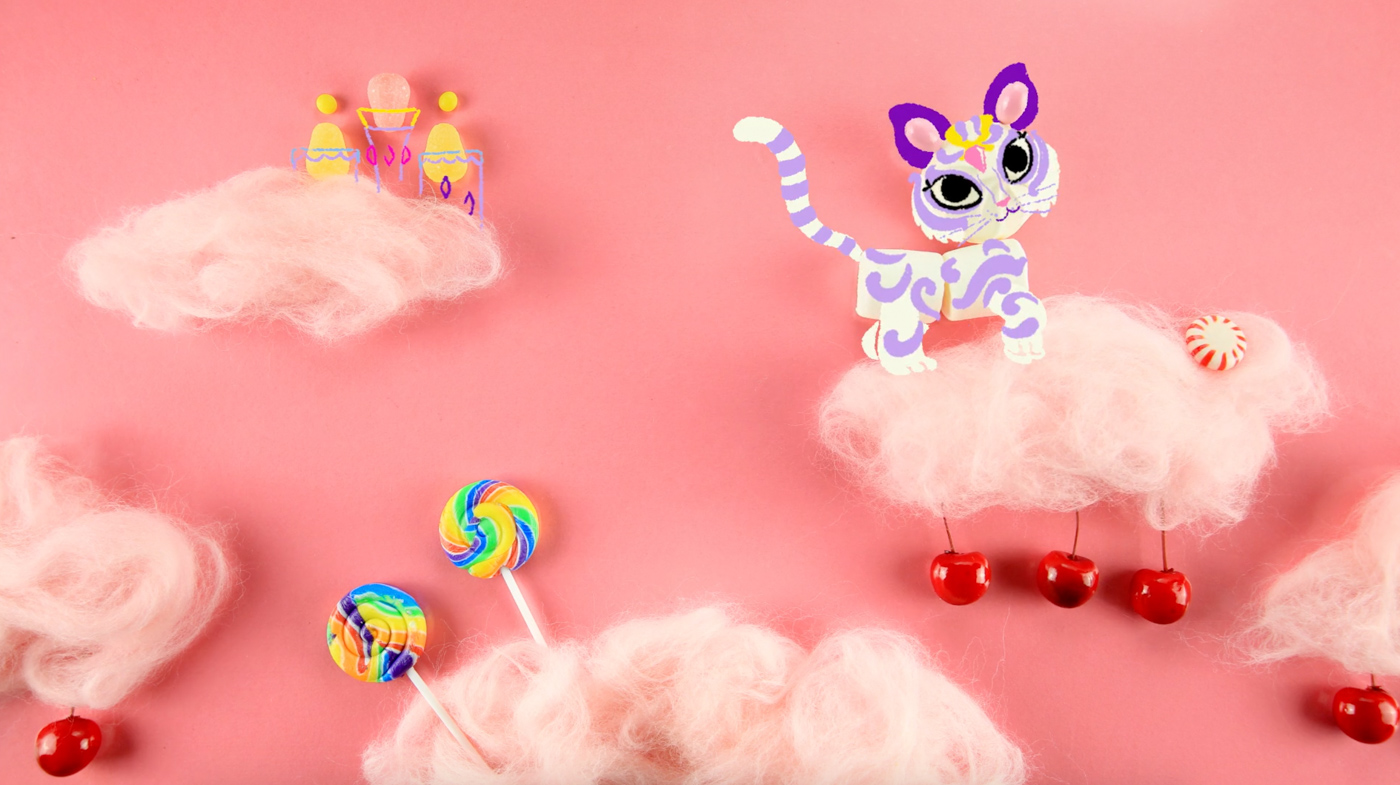

So you’ll create the same video and shoot it in different formats?
Micaela Olsen: Sometimes, if it’s in the budget. And sometimes we’re just thinking very centered, so we can crop in. It’s taught us to be strategic in design.
JP: You’re thinking through audience, voice, how this product could be most successful in an efficient way—and that efficiency is on our end. It is totally going against traditional norms to try to do a stop-motion piece which is very laborious and you need patience, and fit it into a two-week turnaround because that’s what people need because content is coming out so quickly.
You’re not a food-focused agency, but some of your clients include Don Julio, Larabar, and Trader Joe’s. How did food become a part of this?
MO: A lot of it stems from being able to photograph food nicely and just anthropomorphize the food—bring it to life in really fun ways.
JP: Stop-motion ends up being effective for food because it lets the product shine. It’s all about the product and the story you want to tell with food.
For us, we’re also telling the story behind the scenes. We were hired by Condé Nast Traveler to tell the story for Trader Joe’s and they came to us saying, “Trader Joe’s wants to tell a story; they want to launch this new pasta line. Part of our brand is to offer tips about travel, so how do we marry all that together?” Our idea was to take two little pieces of pasta on a road-trip through Italy, which was a playful way of telling this story and offering their tips without having to bring in actors and voiceovers.
What does a brainstorm for something like that look like?
JP: A lot of clients say, “You give us the concept.” And we knew it had to be some kind of journey in Italy. We were inspired by architectural drawings of Italy. One of our designers had spent a semester in Rome, so she had her own drawings and we used that to help her think through how that could translate into an animated experience.
Some of the other tricks we played with along the way—like the “Colli-cheesum.” There was a pasta dish at the end that we created with the Trader Joe’s product. There wasn’t just the cheese, there were also asparagus trees. It was really trying to incorporate how the ingredients would go into a pasta dish.
You’re making content in this technological landscape, but you’re doing it by hand. Your studio must be different than a digital animation studio.
JP: It’s almost more like a prop house. We were just visiting another animation studio and it’s a bunch of clean rooms with tablets and desktops and [here], it’s like walking into a preschool with scissors and paint. We purposely designed the space to feel like a living room. The brand we want to create, at the core everything, has this handmade touch.
Ultimately, people want to see the behind-the-scenes process. Similarly to people wanting to know where their food comes from, people want to know there’s a person making the art.
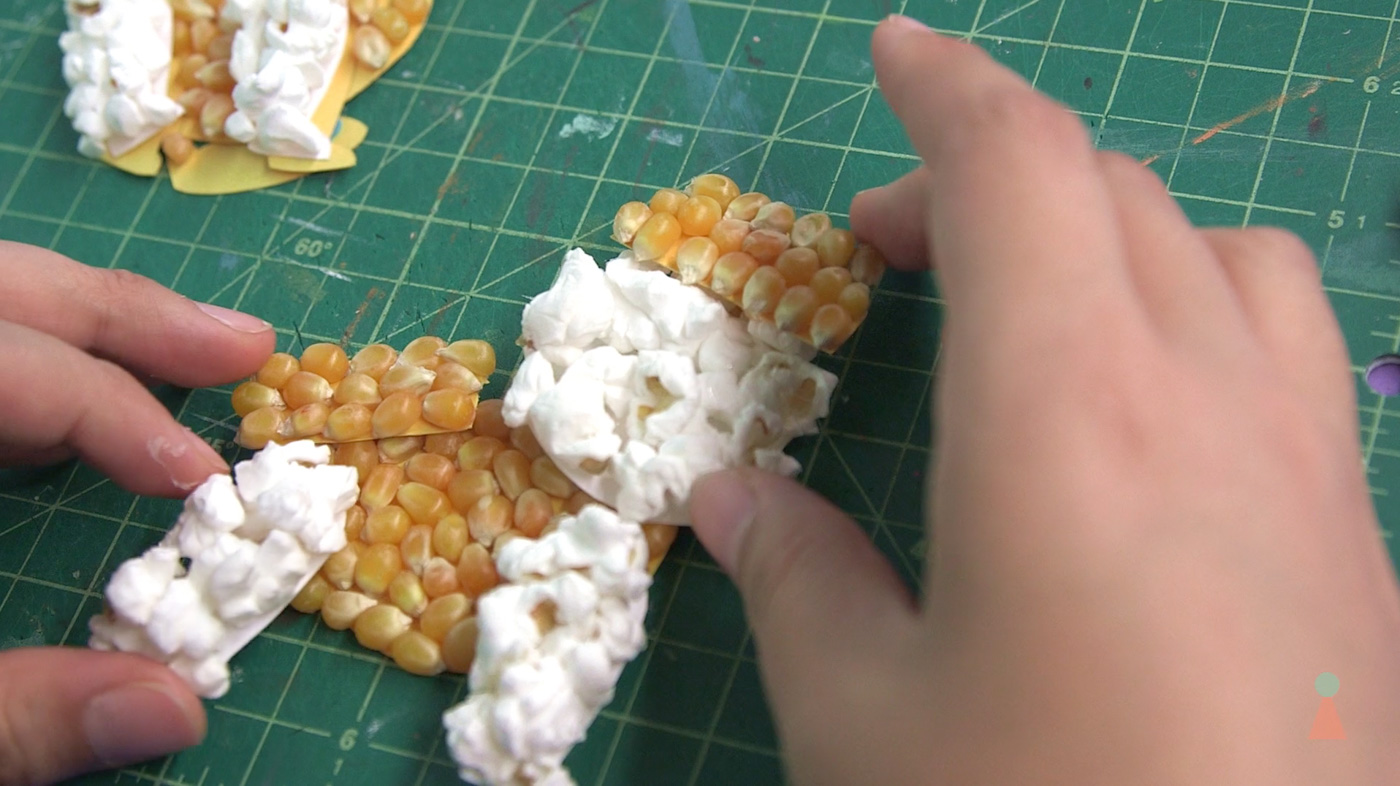
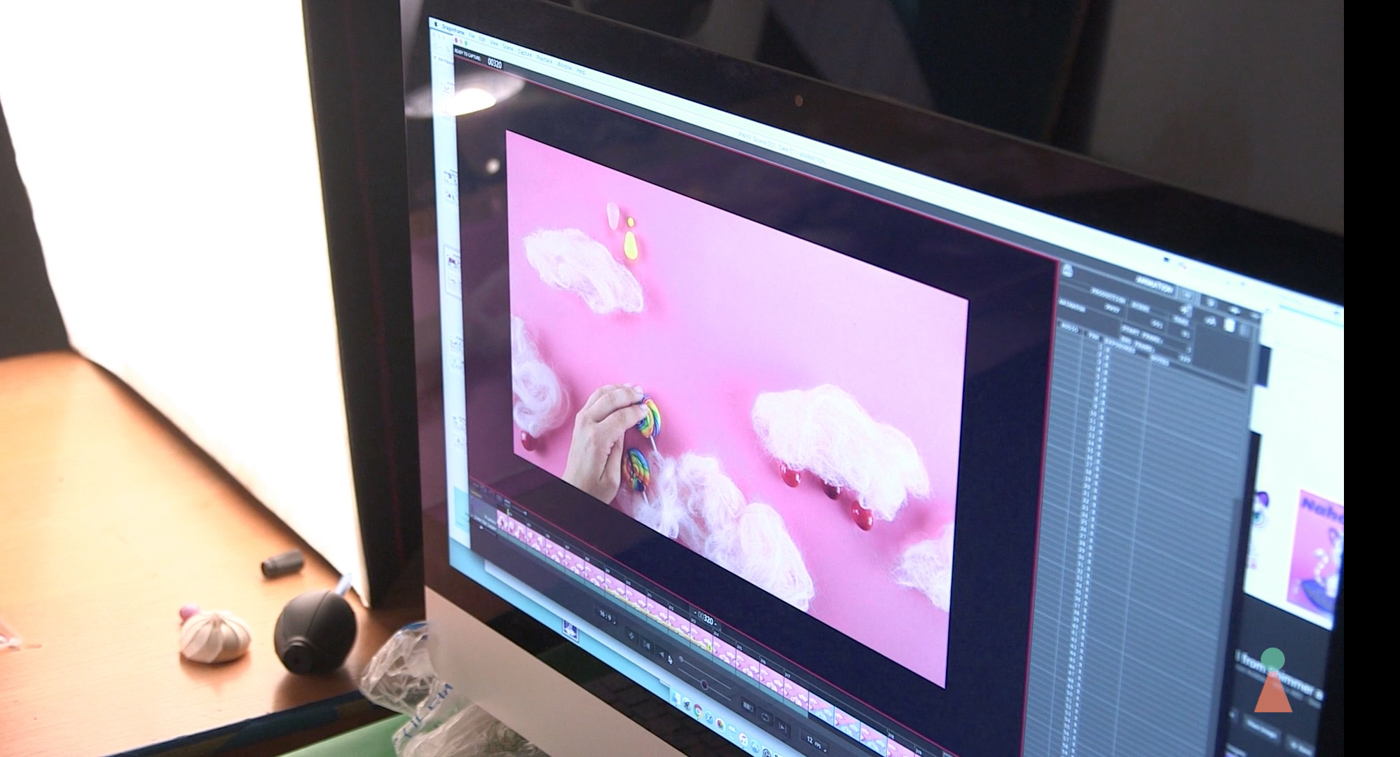
I love that every video on the website has a description of what the process is.
JP: It offers a more personal introduction. We’re a boutique studio, so you should know who you’re working with. Also, I did not realize how much the industry skewed toward male-dominated animation studios, in putting ourselves out there—with the face of the company being women—we were getting so much feedback and so many females and young female animators that were saying, “I’m so inspired by the fact that you guys even exist.” That opened our eyes to the value we could bring by letting people know that we’re here.
Today you do have male employees, as well?
JP: Absolutely. We’re women-run and we do definitely support and celebrate women’s stories and it’s nice to be able to do that, but we’ve got amazing men, trans employees––we want this to be an inclusive experience.
Some of your work, like the science behind being “Hangry,” is educational, too. I can see these being really effective teaching tools.
JP: That’s another thing animation is good for on a marketing level. Visuals and art act as mnemonic devices. We use those in school and somehow we get older and go, “Now we’re just going to sit and talk to you and you’re just going to process this.” We’re still visual learners as humans. That doesn’t change.
Not being in the [alcohol] industry, we didn’t know the idea of pitching a watercolor puppet animation to sell a tequila brand would seem a little eccentric, so we pitched it [to Don Julio], but what worked was we were thinking about the brand, and the whole campaign was supposed to be about telling the legend of Don Julio. There was a lot of history involved and the puppets had this nostalgic effect. The client was fortunately open-minded enough to say, “This actually makes sense because we’re talking about the rich history of this product.” Why not tell it in a way that feels like a connection to culture and the storyline? We were able to play with these beautiful watercolor puppets and we made hundreds of little replacement pieces and they were all wired together.
I imagine so much of this process is collaborative.
MO: We have food stylists and an animator. They have to work tightly together because in any frame, things start to degrade under the camera quickly, and we have to do some post-production cleanup.
JP: That’s part of the decision process. You have to think about what foods look good on camera, what will work on camera. We had to make cotton candy clouds for this Nick Junior piece, and if you use real cotton candy, we realized that will melt on camera. So we had to fake it.
MP: (Laughs) We used loose wool, which looked just like cotton candy. But usually we use the real ingredients.
JP: The first time we used a food stylist, I was like “Why does food styling cost this much?!” And then she opens up her toolkit and you’re like, oh you’re supposed to do that to almonds?
For that Colli-cheesum to happen, we couldn’t just make one. We had to have replacements; it had to crumble, so you had to make one to build up and then break away. We have to think about how the food can actually expand, grow, and come back to a whole.
JP: Real food is one of our toughest “actors.” [It] is a living thing.
Food brands love to be on set. They want to look at the food; they want to look at each pretzel and make sure it’s the right one.
It’s fun when clients come in because it’s always an education. There’s a lot of tapping fingers, and then the minute they see that first unfurling on the screen they’re so delighted.

What do you see food brands prioritizing?
JP: Ingredients. It depends on the brand but they come to us to showcase the product. They want to feature the ingredients, so maybe we’re seeing that because those are the brands coming to us. [Animation] is a good chance to show that; to take this bar and break it down and show what’s really inside of it.
MO: I think there’s a lot of personality, too. More about [their] mission, that [the brands] have a stance on something.
JP: It goes hand in hand with identity. Here are our values—our ingredient values, our political values, our identity values. Those are the people who have looked to our brand.
You started this business with a very different idea, but have evolved to meet the needs of the market. Do you have ideas about what’s next?
JP: I’ve thought about that many times; how did I get here from branding? While I’m not creating brands for women, my mission was to support women, and now I get to do that by employing them.
But going into the future, we don’t want to put too many hard stakes into the ground because you can’t; you just don’t have a clue. I think we’d like to see ourselves develop original content. We’d like to see stop-motion become, in some ways, the norm again in film. People are so happy when they see it, even if they don’t know it’s what they want. We’re getting more requests from shows, from HBO and Netflix to bring that hand-craft back in. People seem tired of the sterile digital.
How does it feel now walking into that studio full of creative people working?
JP: There are some pretty sweet moments when we get fan letters. You make these things and you’re in that zone, and the good and the bad of New York is that you’re never satisfied. I like that about being a New Yorker. We try to leave time to reflect and celebrate, but it’s hard.
Actually, one of the last moments recently when I was like a proud mom: our employees Anthony and Marisha decided to start a movie night where they would showcase their favorite animated films for collaborators and contractors we work with and other people in the community. They invited pretty much only people we have worked with, and it was a packed house. There were people sitting on the floor and in chairs eating pizza and clapping and being connected, and I didn’t do anything but show up. To watch them get up and speak for our brand and say thank you on behalf of Mighty Oak… these people believe in this mission.
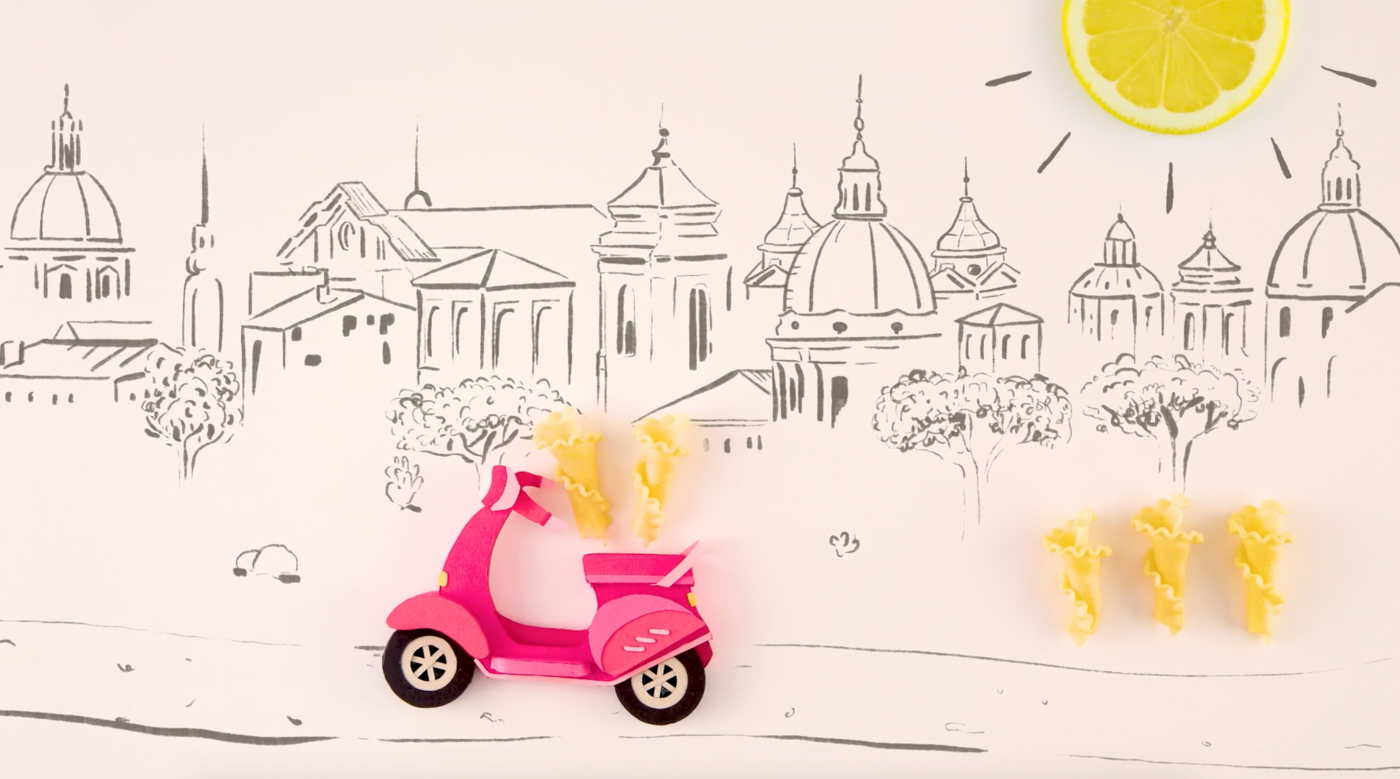
You just provide the platform and let it unfold.
JP: At this point, the best thing I can do is find people with talent and put them in places they can grow and tell good stories. That’s also part of the growth process—to think about where we go. Where does the team want to go? Where does the industry want to go? That is something I learned from the first iteration; just because you want to do something doesn’t mean the world needs it.
I used to think if something wasn’t working, I would have to take the car and turn it around. And you can just continue to go for it. Will stop-motion always be en vogue? We think about what other forms of animation excite us. We don’t want to be so tied to one thing that we leave out a world that is really exciting. But at the heart of it, we want to make sure that some part of craft always holds true, because we think that’s just what makes media special.
——
Visuals provided by Mighty Oak.





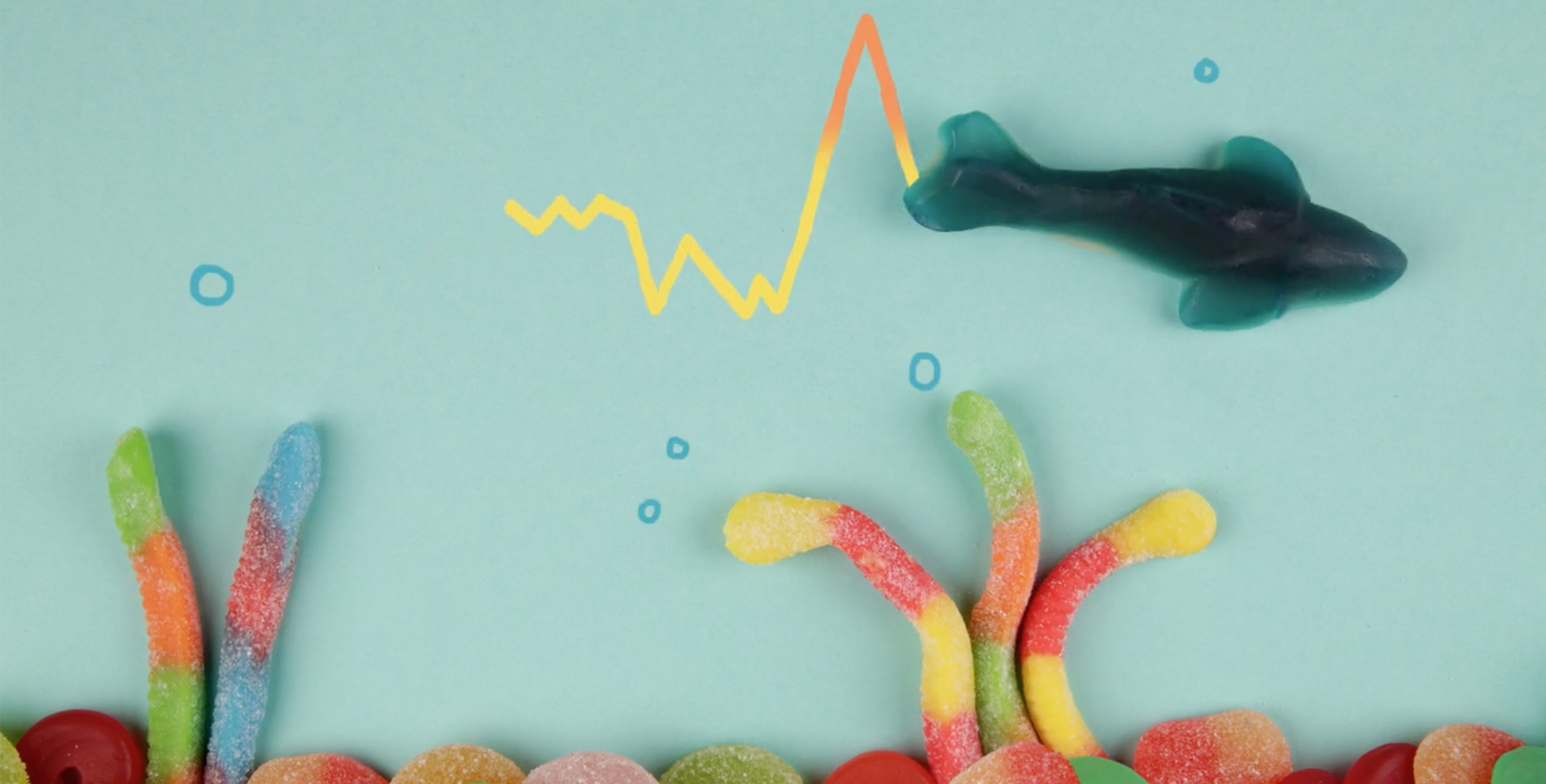

Our comments section is for members only.
Join today to gain exclusive access.